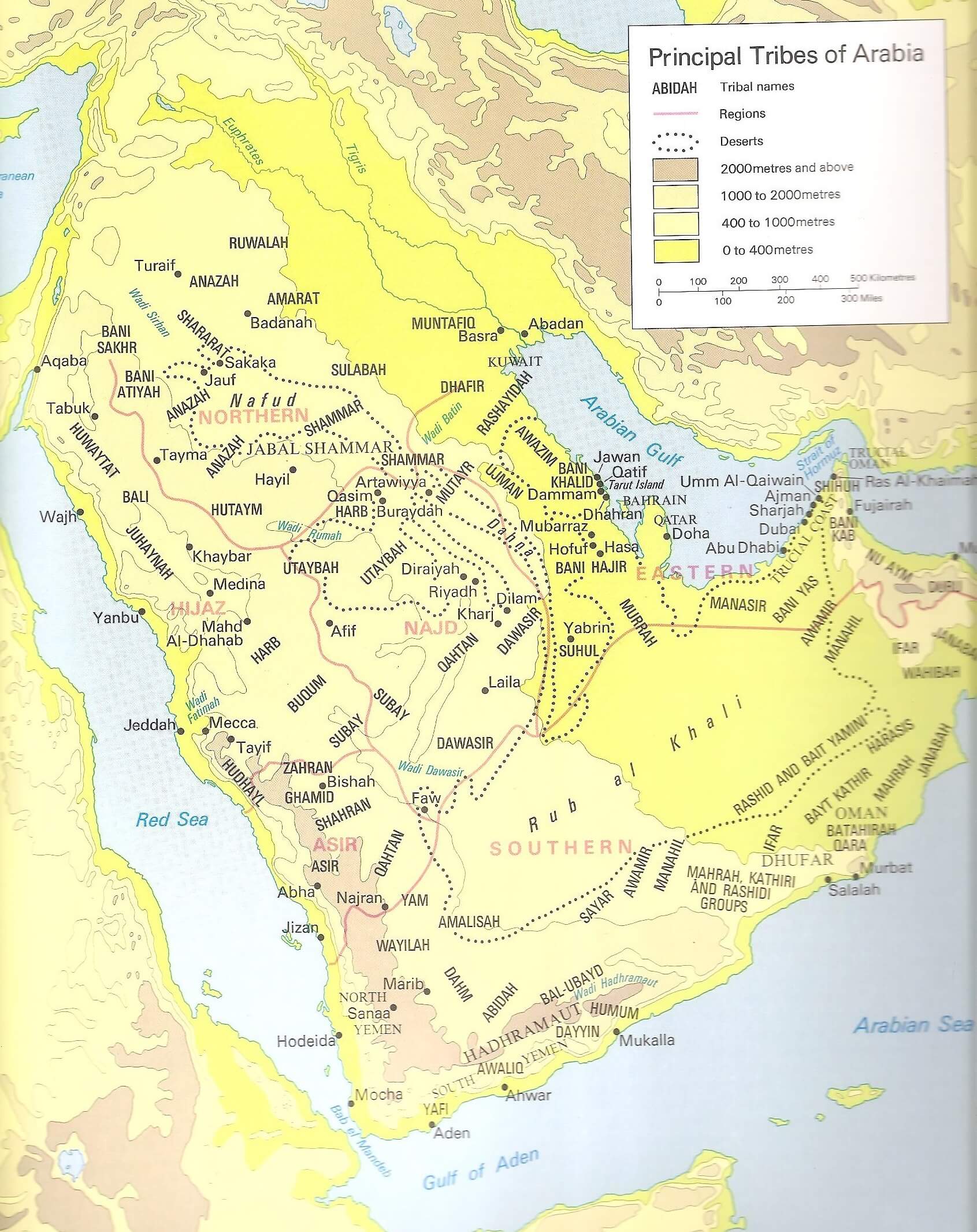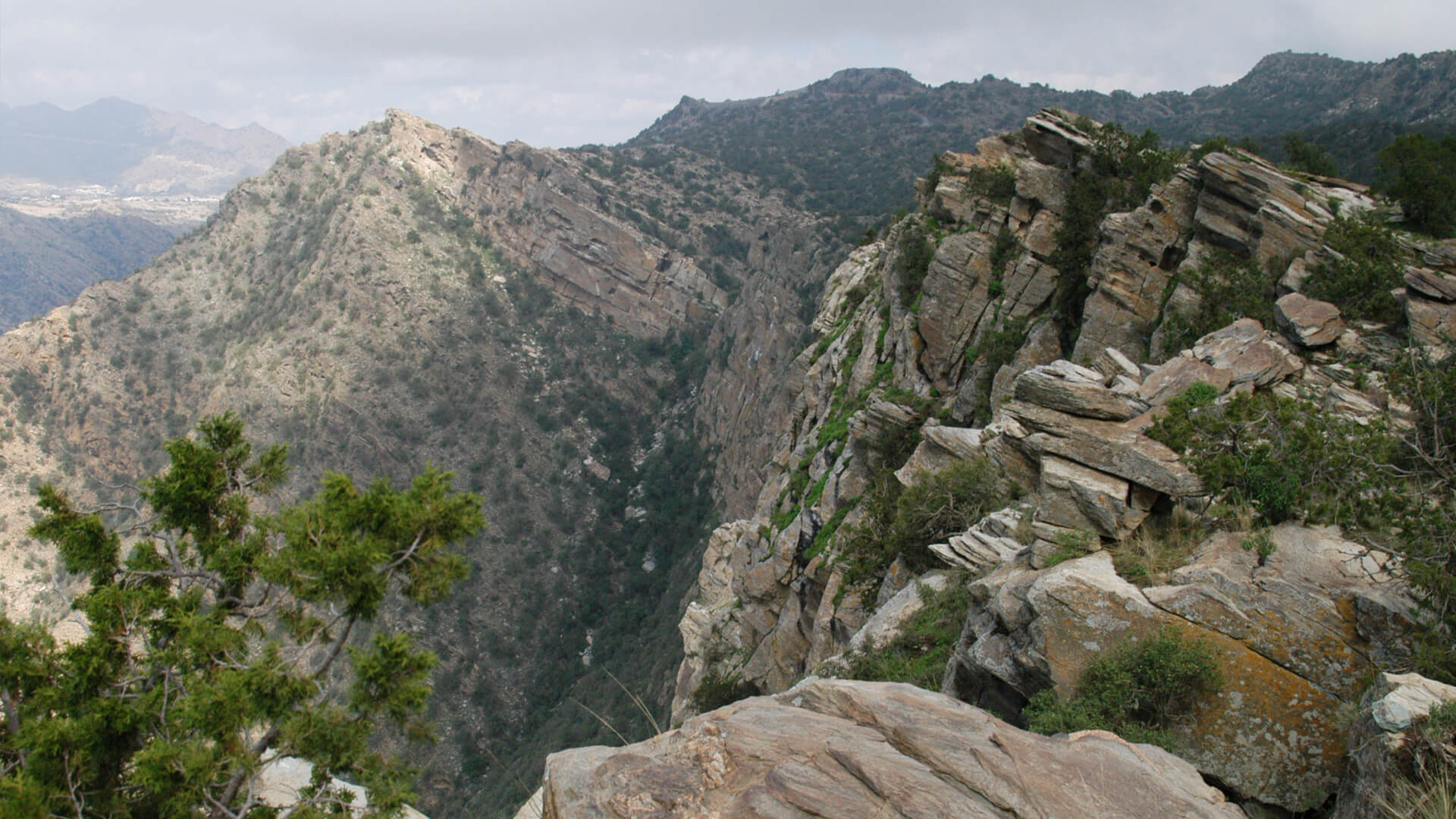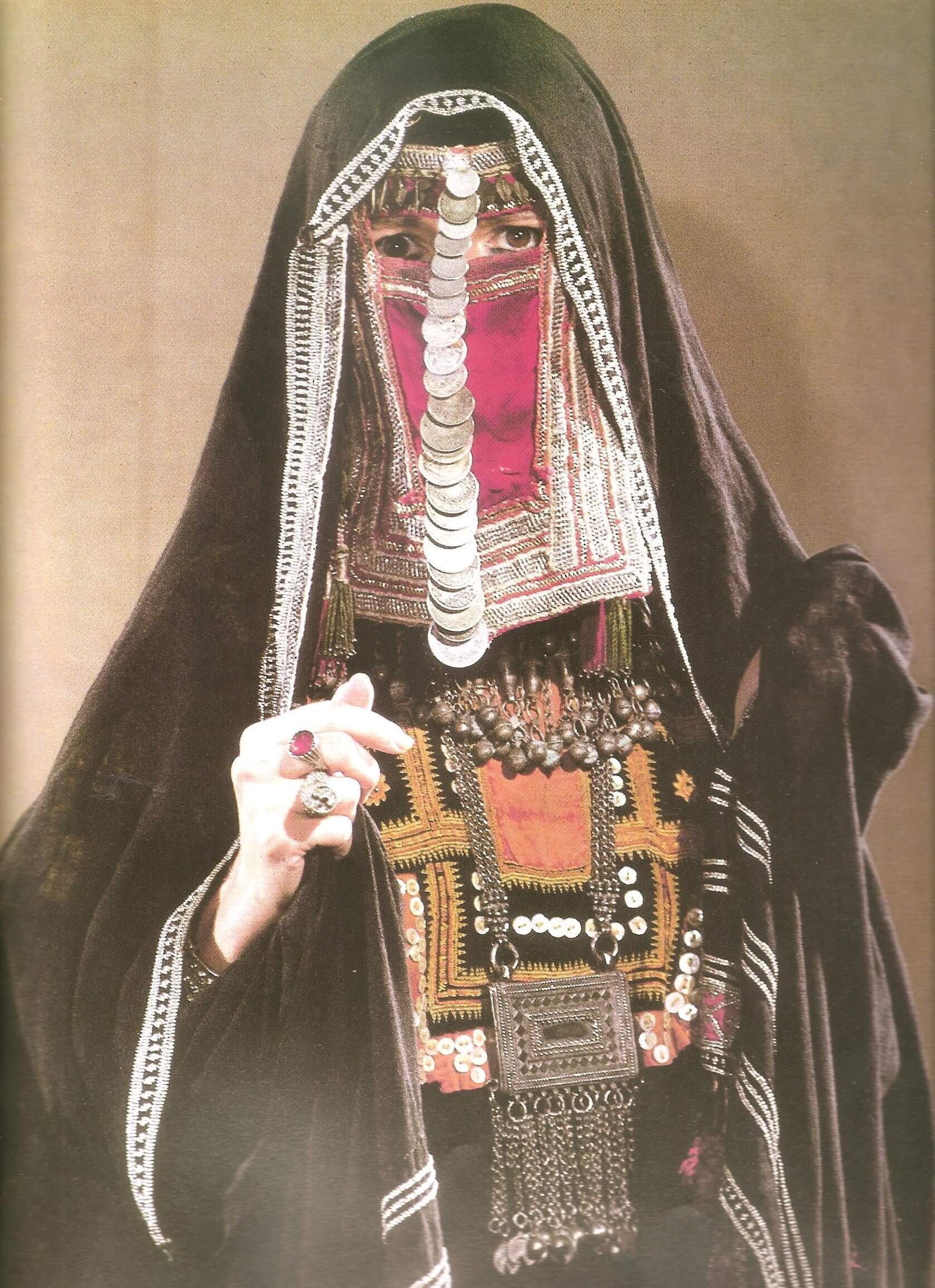Traditional woman dress of Harb tribe, Saudi Arabia
History of the Harb tribe, Saudi Arabia
The Harb tribe was considered one of the largest tribes of the whole Najd and Hijaz areas. The Harb tribe was territorially divided into two regions: the Harb of Najd and the Harb of Al-Hijaz tribes and they were related to each other. Like many other Arabian tribes, Harb is rather a federation of smaller tribes and families.

This picture was described by Gertrude Bell, who took it in 1914 during her travels in Saudi Arabia, as “Harb’s tent – Qasim and Harb’s wife”.
Several Arab scholars mention that Harb is a large Arabian tribe that has migrated from South Arabia or Yemen. The date of this migration into Central Arabia (Hijaz) is not defined in the Arabic sources, however it’s agreed that it is a relatively recent phenomenon. Since it was hard to determine a clear location of most of the ancient tribes of Arabia, only rough estimation can be made.
In the 1917 the Banu Harb tribe occupied a fairly large territory of Saudi Arabia ranging from the shores of the Red Sea to the west of Najd. I only managed to find one map from those times that would show the location of the tribe.

“Tracing map showing the location of Nejd in relation to surrounding territories”, 1919, signed by Major Harold Dickson, Political Agent at Bahrain.
This is how the tribe is being described in the Handbook of Hejaz (prepared by The Arab Bureau, Cairo, 2nd edition, 26 February 1917, Cairo: Government Press):

An extract from Handbook of Hejaz
Genealogically the Harb tribe consists of two main divisions: the Masruh and the Bani Salim, each one of these two branches comprises a number of subtribes and clans.
One more description of the Harb tribe is found in the Gazetteer of the Persian Gulf. Vol. II. Geographical and Statistical. J G Lorimer. 1908:

An extract from the Gazetteer of the Persian Gulf
As the Handbook of Hejaz continues the description:

An extract from Handbook of Hejaz
The Gazetteer of Arabia Vol. I, 1917 gives the following subtribes of the Harb tribe:

An extract from The Gazetteer of Arabia
The Harb tribe was divided into Bedouin who carry on a nomadic life and settled communities living as cultivators in permanent-villages. Before the unification of the tribes of the Arabian Peninsula under the Saudi Arabian State, the Harb tribe was semi-independent politically and economically. Harb was a tribe engaged in rivalry and sometimes intertribal warfare with their neighbors. In the Hijaz where the Harb controlled most of the roads leading to the Holy cities Mecca and Madina through which the pilgrim’s caravans had to pass, a large sum of money was paid by the Turkish Government to this tribe, especially the Banu Salim branch, to ensure the safety of the Egyptian and Syrian caravans, officially as compensation for escort and other services.
More from The Gazetteer of Arabia Vol. I, 1917:

An extract from The Gazetteer of Arabia
There were a few more sources that mentioned concern about raids of the Harb tribe branches. A source that described Hajj and trading routes between Medina and Makkah:

An extract from the Handbook of Arabia. Vol II., 1917
In the correspondence between British officials regarding political affairs during 1907-1911, one British officer wrote:

Extract from a letter written by a British officer regarding political affairs during 1907-1911
An earlier source by an English traveler:

Notes on the Bedouins and Wahabys Collected During his Travels in the East, 1830, by the Late John Lewis Burckhardt.
Later in the 1970s, when the war times were back in the past, the Harb tribe was described by Motoko Katakura in his article “Some Social Aspects of Bedouin Settlements“ published in the Orient Magazine. He lived in the area and spoke about rural communities of the tribe as follows: “… the main activity of the inhabitants is cultivation of plants such as tomatoes, lemon trees, palm trees, watermelons and other crops such as radishes, onions etc. Sheep and camel stock rearing are mostly practiced by the Bedouin of this region. Honey making, ghee and other local industries are also practices by the Bedouins of the mountain who keep bee-hives”.
Indeed, many sources mention that those branches of the Harb tribe that were occupied with cattle breeding, were famous for rare breeds of Iggar thoroughbred black camels and sheep of black color, which no one else had.
I can’t be sure if the below photos have the particular black camel breed of the Harb tribe, but black camels are nonetheless beautiful.

Black camel beauty in Saudi Arabia

Herd of black camels in Saudi Arabia around Najd area
I was gathering information not only about the origin and territorial location of the tribe, but also about habits and sources of income, as this greatly influences what the people were wearing (cattle breading for example was a steady although time and effort consuming income, compared to gathering high tolls from pilgrims and rich merchants passing through the lands controlled by the tribe).
Some fun facts about the Harb tribe that I came across:
- The Ḥarbiya is known among many Saudis as the traditional kiss whereby the right cheeks make contact once, and then the left cheeks make contact at least once or twice, sometimes many more times.
- Public displays of tribal loyalty can be seen in the car license plates, where a three digit code symbolizes the tribe of a driver. A Saudi man who is probably originated from the Harb tribe has paid around 173.000,00USD for a car number plate BRJ 1111. The number 1111 refers to the brand marks that the Harb tribe uses on their camels to identify ownership.
- From the book Worldviews of the Peoples of the Arabian Peninsula: A Study of Cultural System :

The history and the way of life of every tribe highly influence the way tribesmen dress. I took a closer look at the elements of Harb women’s dress and described my findings in the next post.
































